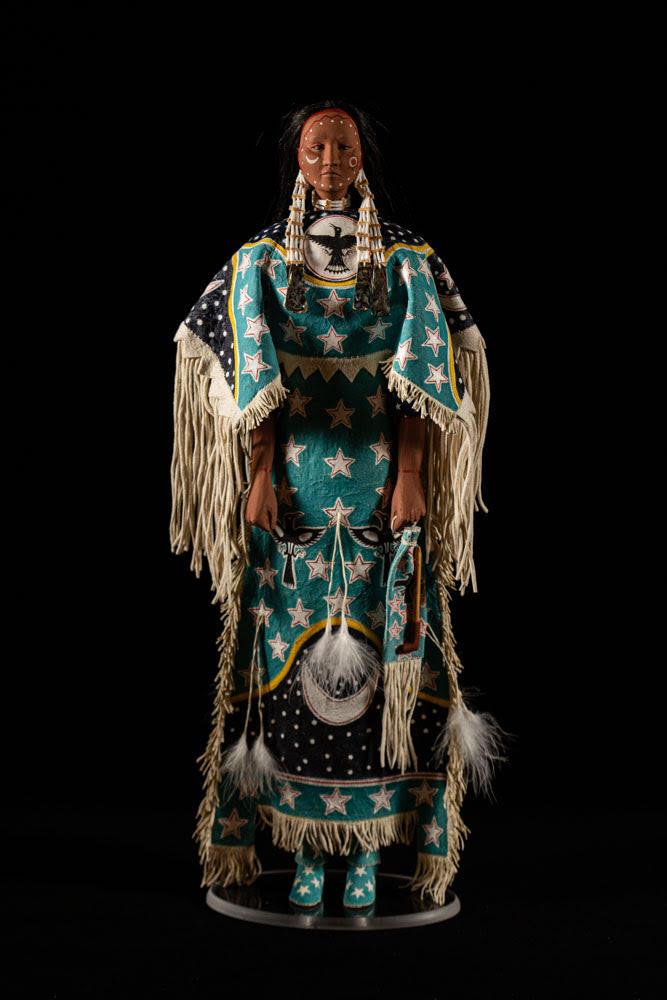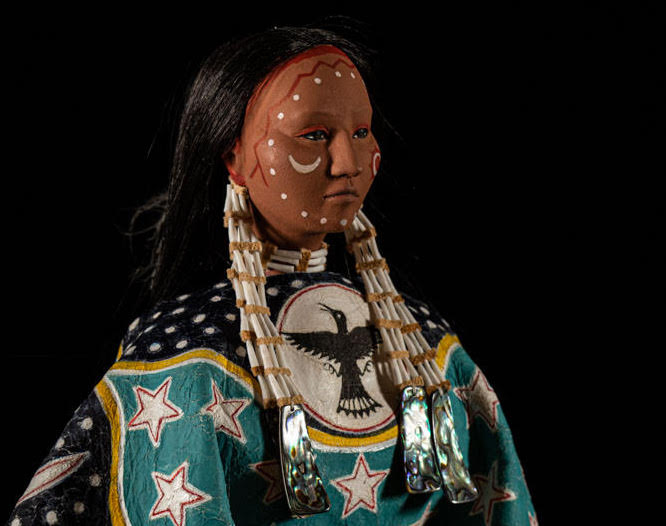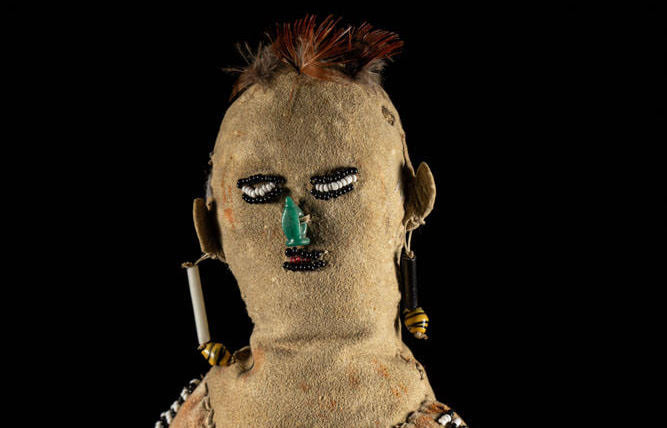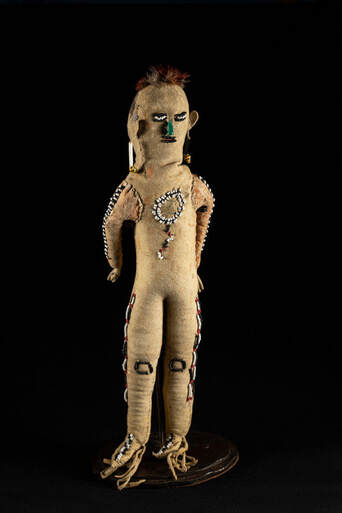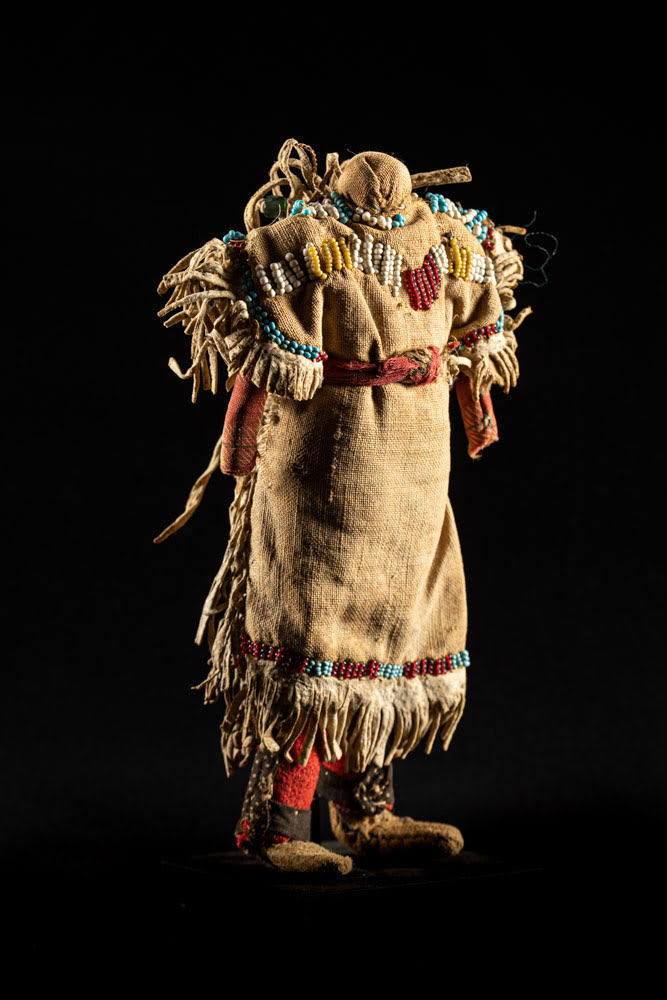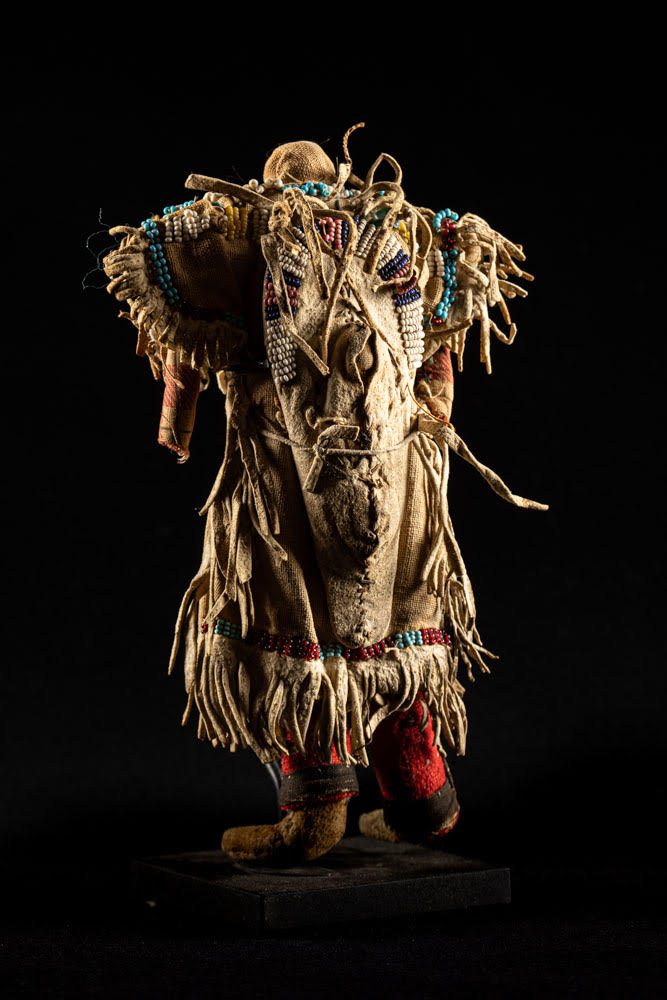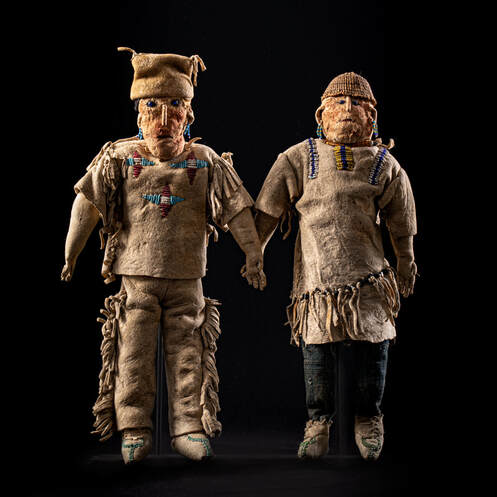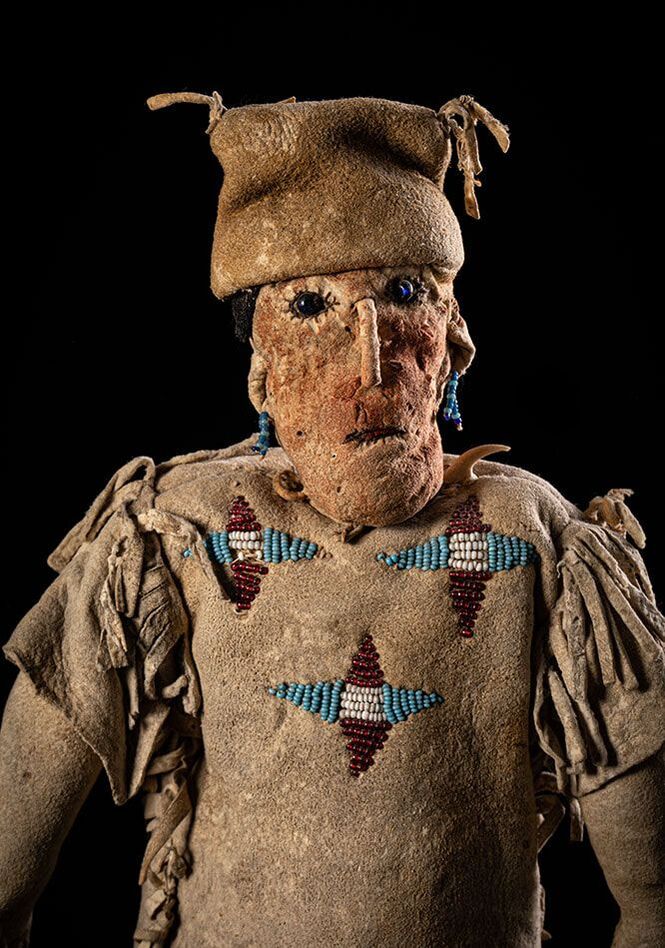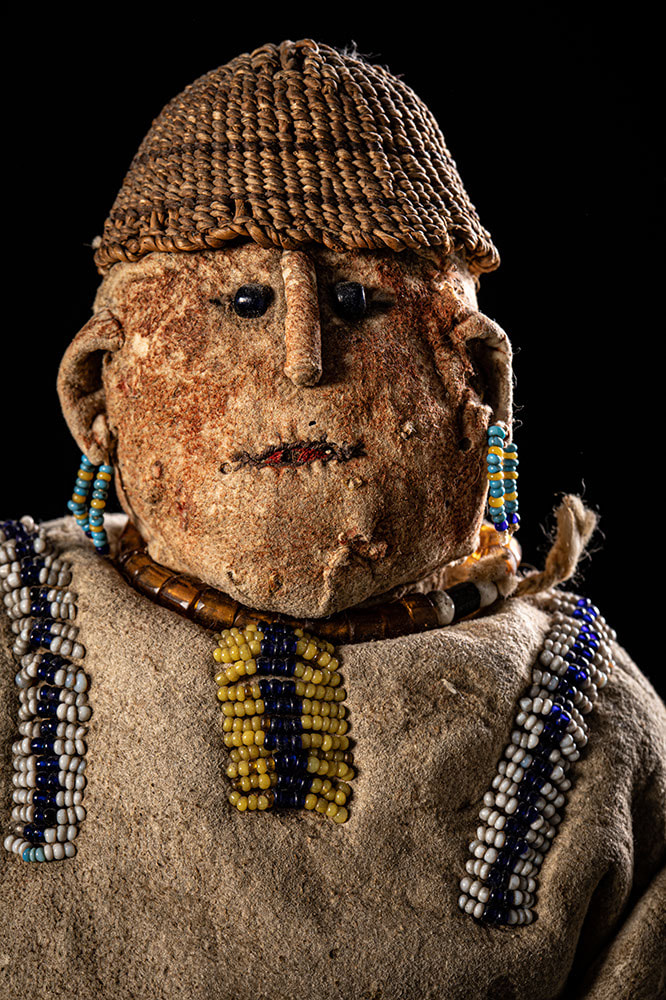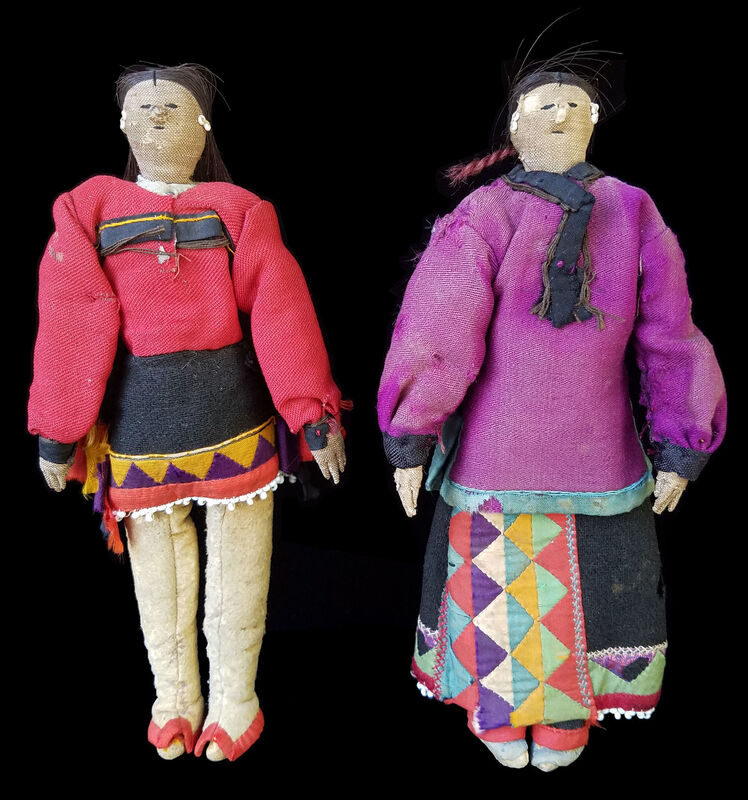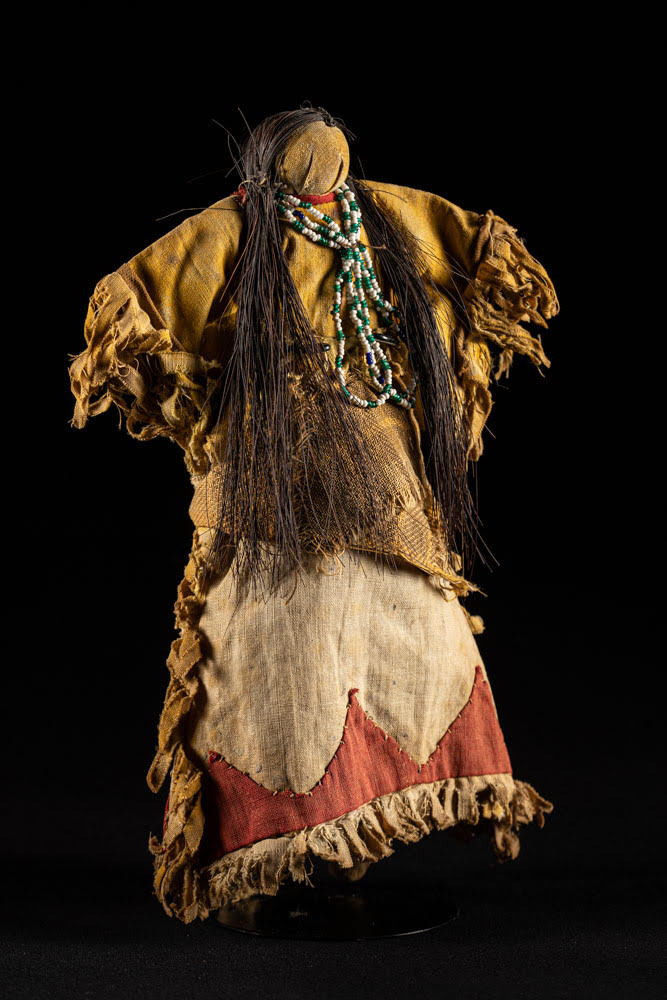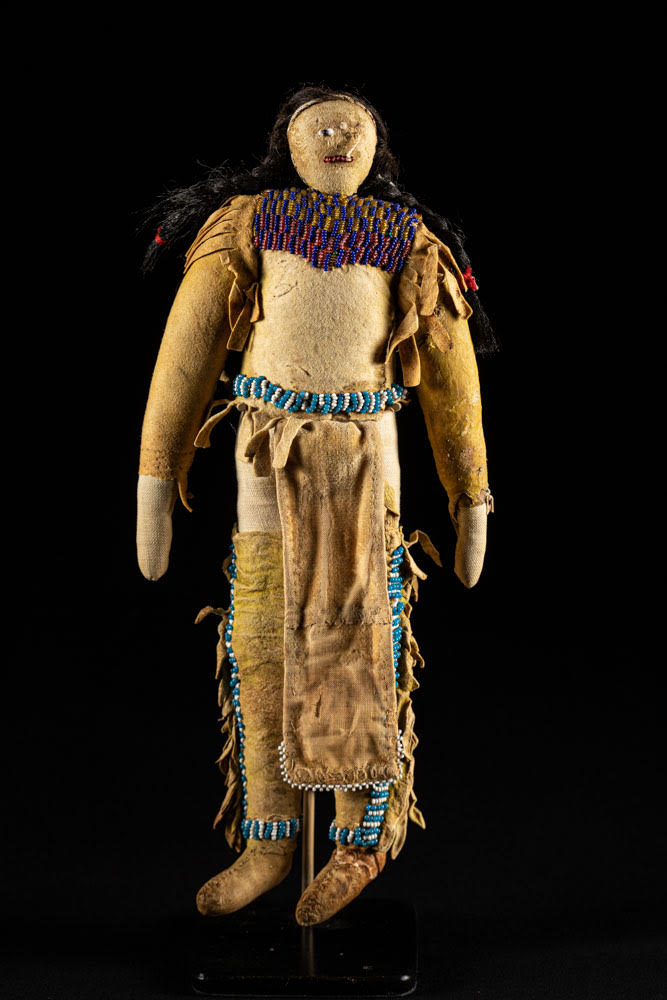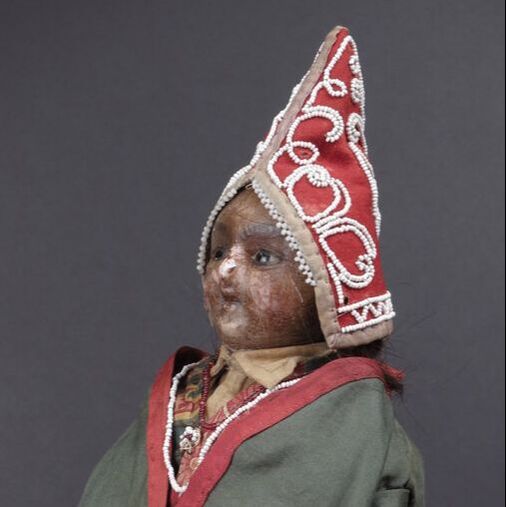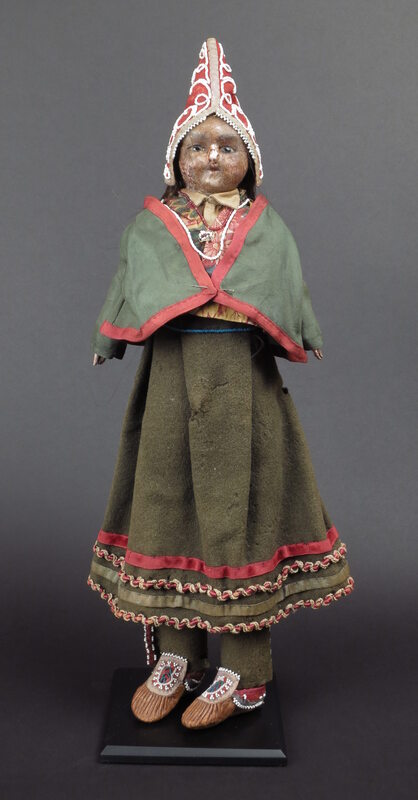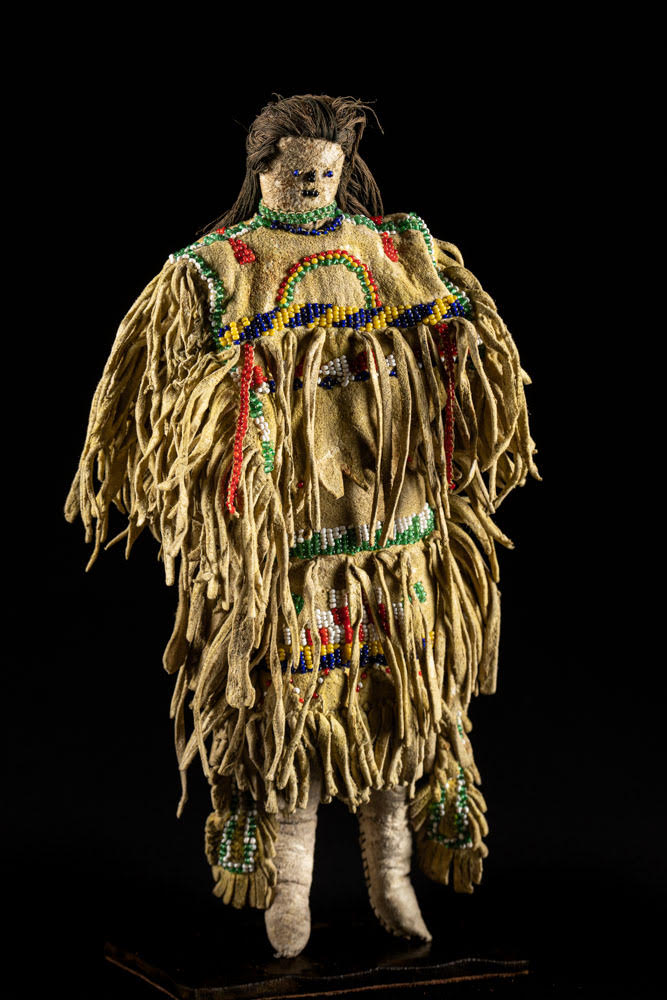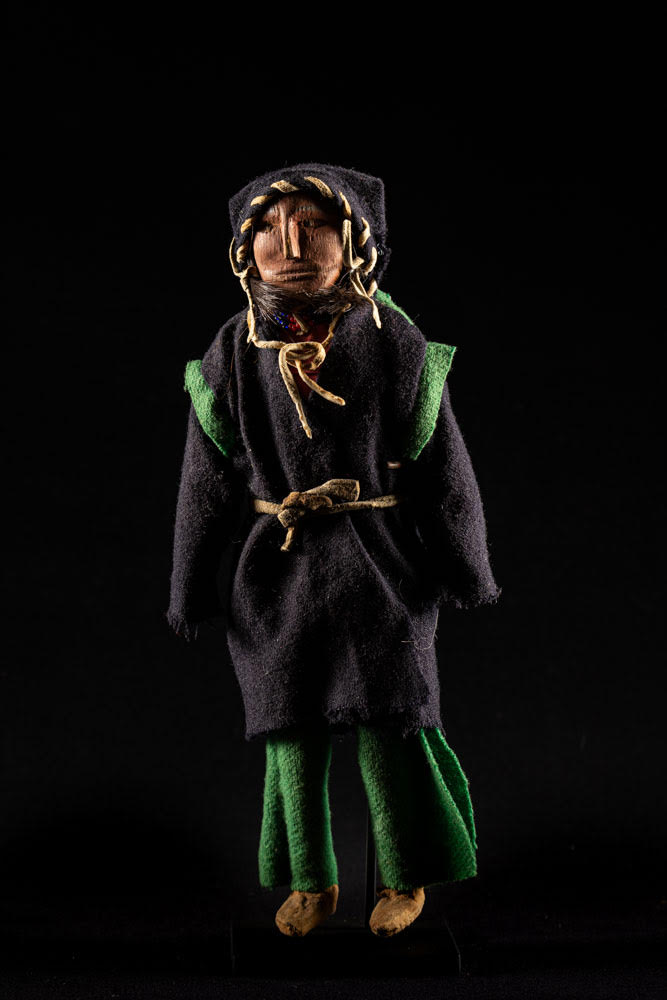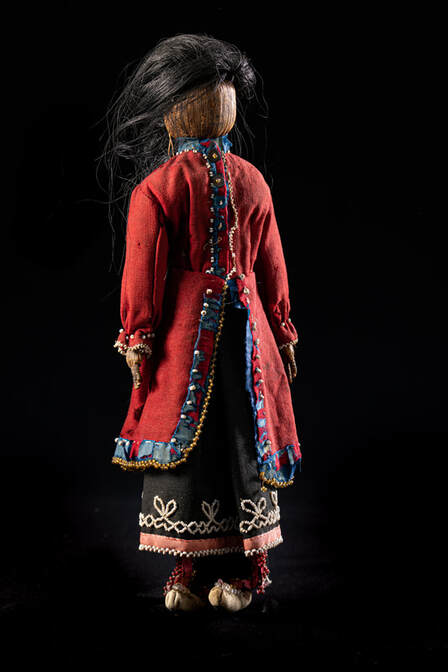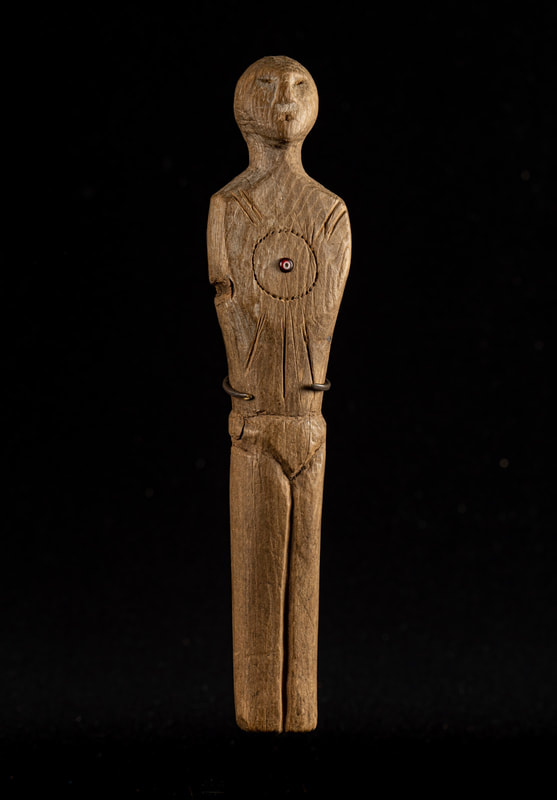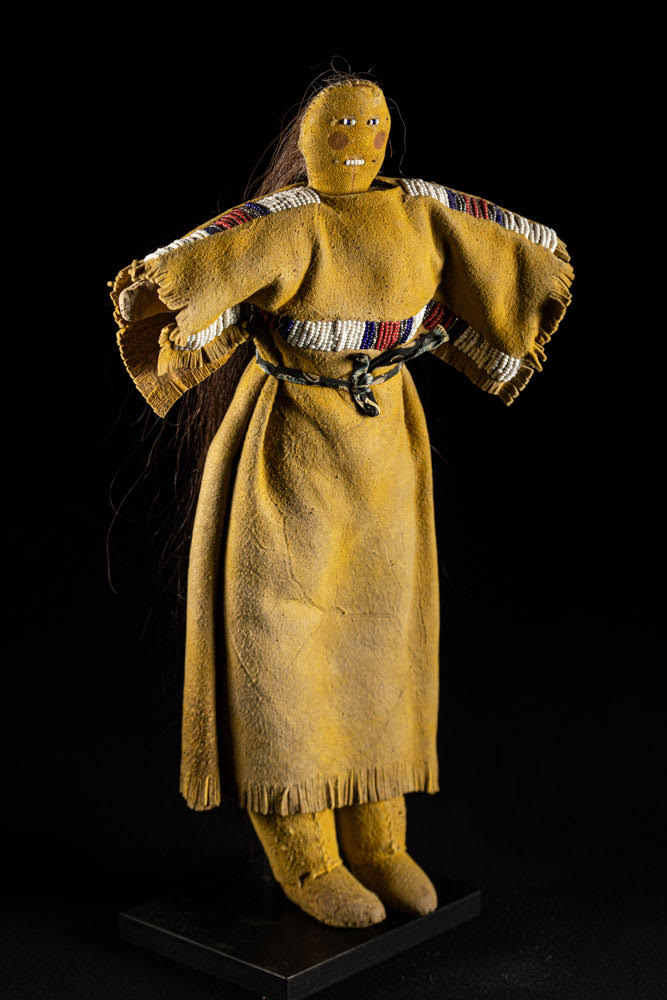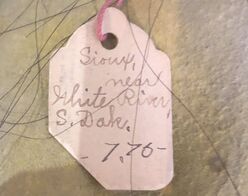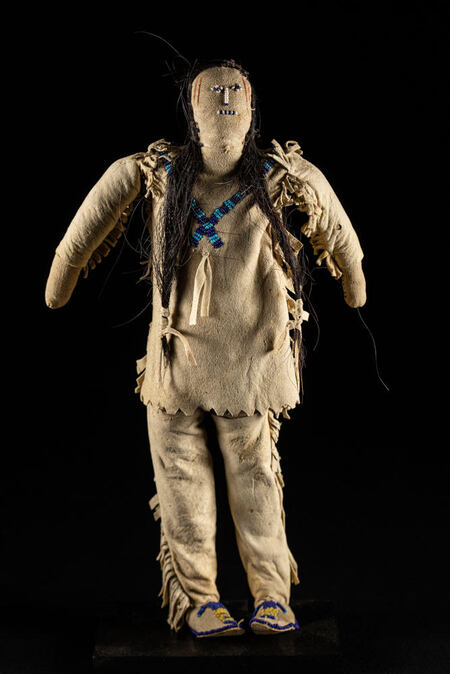FIGURES & DOLLS
Antique and Contemporary
Native American Sculpture
featuring work by
Rhonda Holy Bear
July 5 - September 18, 2021
|
John Molloy Gallery is pleased to present an exhibition and sale of Native American Figures & Dolls featuring the work of contemporary Lakota artist Rhonda Holy Bear. Ms. Holy Bear’s work has been exhibited at Chicago’s Field Museum of Natural History, the Smithsonian's Museum of the American Indian, and Santa Fe’s Wheelwright Museum, among others. Her Arapaho Ghost Dance Figure is one of a series of such figures distinguished by the beautifully painted garments over a fully sculpted body. Ms. Holy Bear first learned doll making as a child from her grandmother, Angeline Holy Bear, and continues to honor her ancestors through her work. |
|
This is an exceptional pair of Modoc dolls (Male 15.25”; Female 14.75”) as each doll has a distinctive face and personality. There are many distinguishing characteristics that place this pair above others - the beaded moccasins, the face paint and hats — the female wears a beautiful basketry example, the male hat is fashioned with brain tanned hide — the greasy yellow beads on the dress indicate a date of the 1870’s; the use of red beads to form the lips, the large black beads for the eyes, the sculpture of the hide faces & heads — all this attention to detail creates a pair that speak to us some 140 years after they were made.
|
|
The earliest known examples of ‘fancy dolls’ were made in the North East near the end of the 18th century and fashioned with wax heads which were European made.
By the 1880’s, Native American communities throughout the United States were making dolls in their traditional dress for their children to play with and as a sale item to non-Natives wishing to commemorate a trip or seeking to better understand the ways of the Native community. |
|
Two Dolls Collected by Amos H. Gottschall
Amos H. Gottschall was a traveller, author, collector and entrepreneur. While still in his teens, he left home in Pennsylvania and began a trip across the continent. He made four trips across the United States over a period of twelve years, frequently staying in Native American communities and developing friendships among the people. He learned the Lakota (Sioux) language and appeared to have spent more time among the various bands of these people than any other group. He collected Native American objects from 1871 until 1905. He labelled every one of the many hundreds of objects he collected, listing the name of the group and where it was collected. For example, this doll has a tag which reads “Sioux near White River, S. Dak.’ |
|
In his book “Travels From Ocean To Ocean, and From The Lakes To The Gulf”, Gottchall narrates his experiences in his journeys and his time in the Native American communities. In this narration, he makes particular emphasis of the medicinal rituals and herbal practices among the people he stayed with. In 1881, he established Gottschall Remedies which operated until 1915. On his trips, he frequently sold his patent medicines to the Native people. He also wrote over 50 religious books and pamphlets, all based in the Christianity of his era. His great publication “Priced and Descriptive Catalogue of the Utensils, Implements, Weapons, Ornaments, Etc of the Indians, Mound Builders, Cliff Dwellers’ was printed in 1909 and dispersed this large collection of all documented material that was collected in the early years of colonial settlement and is an important ingredient in the available literature of the era that firmly establishes the historical fact of the marketplace in Native American Art. |

